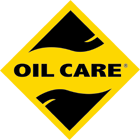Farm accident causes 1,500 litre oil leak in the Midlands
What Happened

Tank tipped over
A farm in the midlands had a new integrally bunded tank installed to heat their farm house.
The farmer used heavy machinery to clear ivy from a nearby wall and accidentally knocked the tank – but didn’t notice.
Later that evening the tank overbalanced and fell off its base – made of stacked bricks and not meeting minimum requirements for safe installation. 1,500 litres of heating oil, kerosene, to leaked out of the tank.
When the farmer tried to right the tank using a fork attachment on his tractor both the internal tank and the integrated bund were pierced, adding to the pollution risk.
Environment Agency officers attended the incident and used pollution control equipment to limit the spread of the oil. Their efforts prevented a potentially serious pollution incident downstream. But with oil in the groundwater the clean-up will be expensive.
What was the impact
Most of the kerosene flowed down by the side of the farm house and under the wall into the foundations.
But a surface water drain 20 m from the tank connected to a local brook.
Some oil also flowed into a domestic well through its brick wall. Although the well isn’t used for drinking water this gave the kerosene a quick route to the local groundwater and the environmental clean-up company have had to install pumps and oil separation equipment that’s expected to be on site for months.
What was the result
The farmer had to pay costs of time and equipment used by the Environment Agency of over £1,300 – but this is one of the smaller costs for this incident.
The costs for this type of incident can soon mount up and, depending on the type of policy you have, your insurance may not always pay out.
You need to consider direct costs for loss of the oil itself, a new oil storage tank (preferably integrally bunded) and installation of a new, secure tank base. But there’s also excavation of contaminated soil, off-site soil disposal (as hazardous or special waste), underpinning your home’s foundations if the oil reached your home and even excavation of internal rooms.
This adds up to costs to the oil tank owner of anything between £80,000 and nearly half a million.
And this doesn’t account for time you and your neighbors may not be able to live in your home, lost garden plants, health effects from the smell and more …
What they learnt
It’s essential that all tanks are installed safely – follow the manufacturer’s instructions carefully. Getting the base for your tank right is important, plastic tanks must be installed on a stable, level base. All domestic tanks (those used for heating or cooking at your home) must have a base that extends a minimum of 300mm past the widest point of the tank in all directions for fire safety. If you don’t:
- the manufacturer’s warranty may be invalidated
- your insurance may not pay if there’s a spill
- any tank installed since April 2002 is contravening the Building Regulations
If a tank is placed somewhere near where vehicles are used you should consider installing impact protection.



